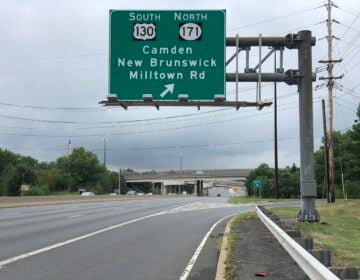Encouraging transit-oriented development
March 17
By Seth Budick
for PlanPhilly
By passing the Transit Revitalization Investment District (TRID) Act in 2004, Pennsylvania took a step towards encouraging transit-oriented development. This legislation enables local governments and transit agencies to partner in developing TRID planning studies and provides them with incentives to do so, but since no TRID related development has so far occurred in the Philadelphia area, the law’s impact is yet to be seen.
According to the program guidelines, the purpose of these districts is to spur transit-oriented development, community revitalization, and enhanced community character around public transit facilities in communities across the Commonwealth.
Through TRID, municipalities and county planning agencies can apply for up to $75,000 from the Department of Community and Economic Development (DCED) to assist in conducting planning studies for transit-oriented development. Creating a TRID plan requires transit providers to work together with local government partners, and that in itself is an important development, said Richard Voith of Econsult, an economic consulting firm. “In the past, an organization like SEPTA really had no sort of legal ability to get in the business of participating in transit-oriented development,” he said.
The law also allows for the establishment of “value capture” areas in which a portion of the additional tax revenues generated within a TRID may be used to pay for public transportation capital improvements, related site development improvements and maintenance. TRIDs thus create an additional incentive for transit agencies to work together with municipalities and counties on the planning and long term funding of development.
The provision of funds for maintenance is especially important since, according to Rich Bickel, Director of the Planning Division at the Delaware Valley Regional Planning Council and one of the authors of the TRID legislation, SEPTA often has funds for capital projects, but lacks the money to maintain them.
A key unanswered question is how the revenues captured by the TRID would be shared by the transit agency, the municipality and the school district. None of the TRID planning studies that are currently underway in Philadelphia have yet reached this phase of negotiation, however.
In addition to assistance with planning, TRIDs may be eligible for additional state funds, Bickel said. “Once a community would be designated as having a TRID area, the legislation says that they could receive priority for other state programs,” although there are currently no funds specifically set aside for this purpose.
The impact of the TRID act on SEPTA’s ability to participate in joint development is still somewhat unclear, according to David Fogel, SEPTA’s Director of Long Range Planning, due to some possibly conflicting language in the bill.
By his reading, “Under the TRID legislation, transit agencies are authorized to acquire and improve TRID property for real estate development consistent with ‘existing authority or limitations’ and with other enumerated points.” Elsewhere though, the legislation states that “the transit agencies may not be the primary real estate developer, but be confined to support and access facilities.” Whether the bill thus permits SEPTA to play a more active role in development “may be up to the courts if it ever goes that far,” Fogel said.
WHYY is your source for fact-based, in-depth journalism and information. As a nonprofit organization, we rely on financial support from readers like you. Please give today.






